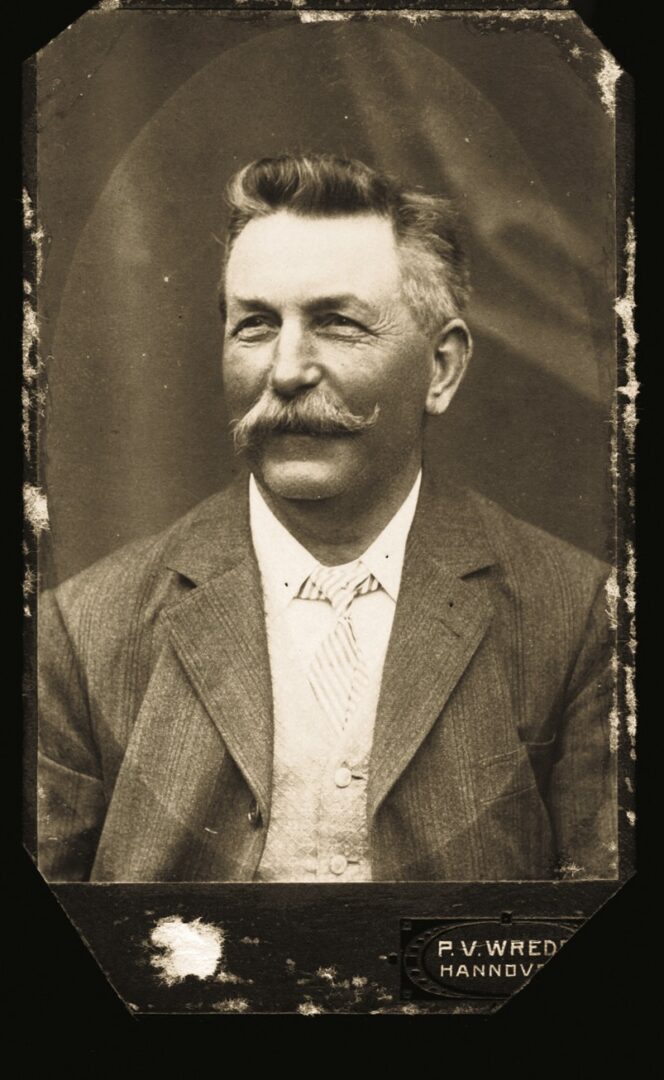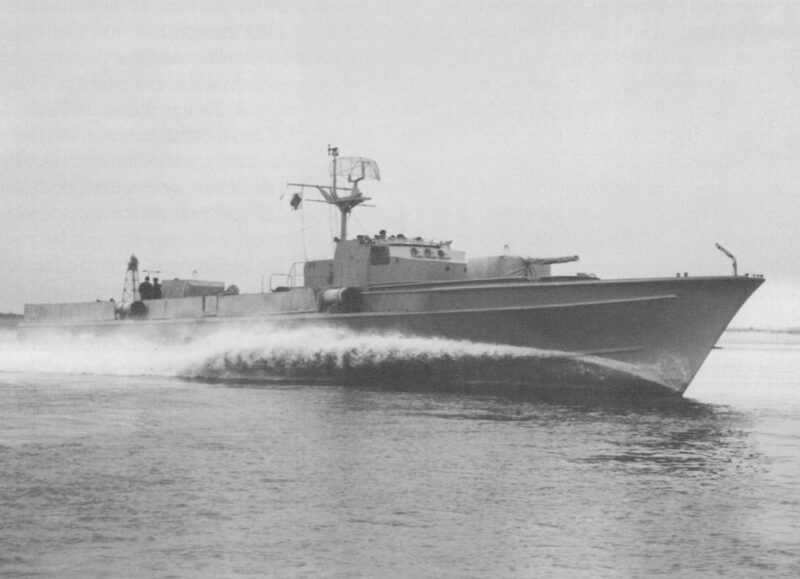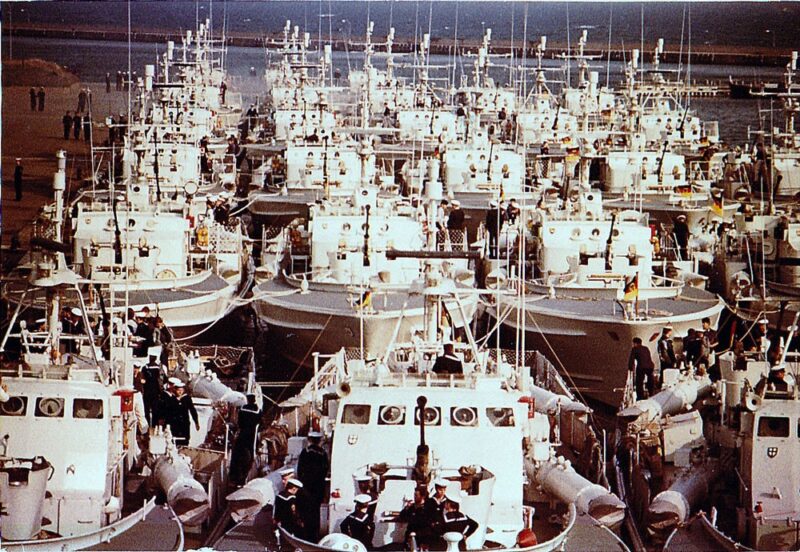Bremen shipbuilder celebrates anniversary - The family business Fr. Lürssen Werft GmbH & Co. KG celebrated the 140th anniversary of its foundation in June. Within four generations, the Lürssen family has transformed a small boatbuilding workshop into a world-class shipbuilding company in northern Germany, which today, with over 1,000 highly qualified employees at the Bremen site alone, is not only one of the world's leading suppliers of yachts, but also one of the recognised system houses for the construction of naval vessels.

The foundation stone for the shipyard was laid by the then 24-year-old boat builder Friedrich Lürßen on 27 June 1875. Since then, Fr. Lürssen Werft has built more than 13,000 boats and ships - all of them at the Bremen shipyards or their sister shipyards in northern Germany, which are now part of the Lürssen Group.
The focus of work in the early years was on fishing boats and ferries. The construction number "Eins" was a five metre long rowing boat. In the 1880s, the shipyard first came to the attention of the public with the construction of the Daimler boat REMS - one of the world's first motorboats. From around 1890, motorboats were then produced in co-operation with Daimler-Motoren-Gesellschaft and Lürssen quickly developed into the leading German motorboat shipyard. In the years leading up to the First World War II Lürssen boats repeatedly took part successfully in international races. In 1911, a boat reached a speed of 27 knots, which was sensational at the time. Even before the First World War II the small yacht shipyard in Bremen-Vegesack experimented with the construction of fast motorboats and built the first fast torpedo carriers during the war. Airship engines were used for propulsion, which is why they were known as LM boats. During the war, Lürssen also built motorboats for various military purposes, including remote-controlled boats, minesweepers and submarines. With the later so successful concept of the torpedo speedboat, speeds of 35 knots and more were already achieved. The boats LÜSI 1 and LÜSI 2 (for Lürssen-Siemens) were the first Speedboats with the later typical arrangement of two torpedo tubes on the foredeck, but was not completed before the end of the war. After the war, the shipyard shrank from around 700 to 100 employees. Initially, only small sports and work boats were built again.
From 1920 onwards, the company was able to build on its successes in motorboat construction before the war. Orders for foreign coastguard boats, lifeboats for the German Maritime Search and Rescue Service and the electric boats of the Königssee fleet were also part of the order book. In 1929, the shipyard received the first official order from the Reichsmarine for a boat designated U Z (S) 16 for testing purposes. It had a length of 28 metres, a displacement of 51.6 tonnes and reached a speed of 35.5 knots with three Daimler-Benz petrol engines. The boat was renamed S 1 in 1932. In the following years, the model developed into the basic model for German Speedboats. From 1929, the shipyard also began producing minesweepers in cooperation with the neighbouring Abeking & Rasmussen shipyard. From 1933, the first Speedboats were delivered with diesel propulsion. This significantly increased the reliability and range of the boats. Lürssen had thus become the main shipyard of the German Speedboats and was to remain so until the end of the war. A total of 251 Speedboats were launched, 175 of them at the Lürssen shipyard. The remainder were built - according to Lürssen plans - by the Schlichtung and Danziger Waggonwagenfabrik shipyards, which were added later. The boats consisted of wooden hulls on light metal frames, from the S-100 upwards with an armoured wheelhouse. With three Mercedes-Benz MB-518 engines, speeds of over 42 knots could eventually be achieved. Thanks to the favourable underwater hull shape, specially attached storage rudders (Lürssen effect) and an improved forebody, the boats were very seaworthy.
After the Second World War shipbuilding was initially completely banned in Germany. The shipyard temporarily produced household goods. Soon the first repair orders came in and from 1946 fishing cutters were back in the programme. The first German post-war freighter was delivered in 1949. By 1985, 80 small cargo ships, even tankers, had been built. The construction of sea rescue boats and cruisers was also added to the production programme. In 1952, the shipyard was given the name "Lürssen Werft". With the SILBERMÖWE, JAGUAR and ALBATROS class, Lürssen continued its tradition as the main shipyard for the young German Navy. In detail, the following ships were built for the German Navy:
- In 1954/55 three boats of the SILBERMÖVE class (class 149) for the British Navy and in 1955/56 three more boats of the same class for the Federal Border Guard. From 1956, these boats formed the 1st speedboat squadron (initially the speedboat training squadron).
- 1957 Speedboat JAGUAR, the first new speedboat built by the German Navy. A total of 40 boats were built (JAGUAR class (class 140), similar to the SEEADLER (class 141) and ZOBEL class (class 142)), 29 of which were built at the Lürssen shipyard, 11 under licence at the Kröger shipyard in Rendsburg. (1957-1963).
- 1971-75: Of the 20 Speedboats of the TIGER class (class 148) were completed at Lürssen (except for the weapons).
- 1973-76: 10 Speedboats of the ALBATROS class (class 143), 7 of them with Lürssen, 3 with Kröger.
- 1981-83: 10 Speedboats of the GEPARD class (class 143A), 7 of them with Lürssen, 3 with Kröger.
- The surcharge for the costs of supplying the Speedboats Lürssen also received some of the supply ships that were indispensable at sea:
- 1961: Tender NECKAR (Rhine class, class 401)
- 1994: Tender DONAU (Elbe class, class 404).

This marked the beginning of a "different kind of Lürssen effect". Entire generations of naval personnel came into contact with Lürssen boats. The close cooperation and close-knit coexistence of all ranks and careers fostered a special relationship within the crews and with the speedboat weapon system. Many officers of the German Navy also received Speedboats their first command experience, as the boats with relatively low ranks enabled them to take command themselves. For other navies, too Speedboats built. In addition to Sweden, Lürssen also delivered to Indonesia and Singapore, Arab countries, South America (Ecuador), Spain and Turkey. In some cases, the shipyard also built under licence abroad. In the years that followed, the shipyard continuously expanded its naval projects. Lürssen emancipated itself from being predominantly a boat builder to a manufacturer - also within the framework of joint ventures with other shipyards - of technically sophisticated coast guard boats, mine defence boats and offshore patrol boats as well as corvettes and frigates - including the class 125 frigate - through to the BERLIN-class task force supply vessels for the German Navy.

At the end of the 1980s, the current owners Friedrich and Peter Lürßen decided to intensify the design and construction of customised luxury yachts and establish them as a second business area alongside naval shipbuilding. With success: since then, around a third of the world's 100 largest yachts have been launched by Lürssen in cooperation with renowned designers - including shipbuilding milestones such as the AZZAM, currently the world's longest private yacht at 180 metres. The pictures vividly demonstrate the development: from the REMS to the AZZAM and for the German Navy from the Jaguar Speedboats to the class 12 frigate
Author: Jürgen E. Kratzmann










